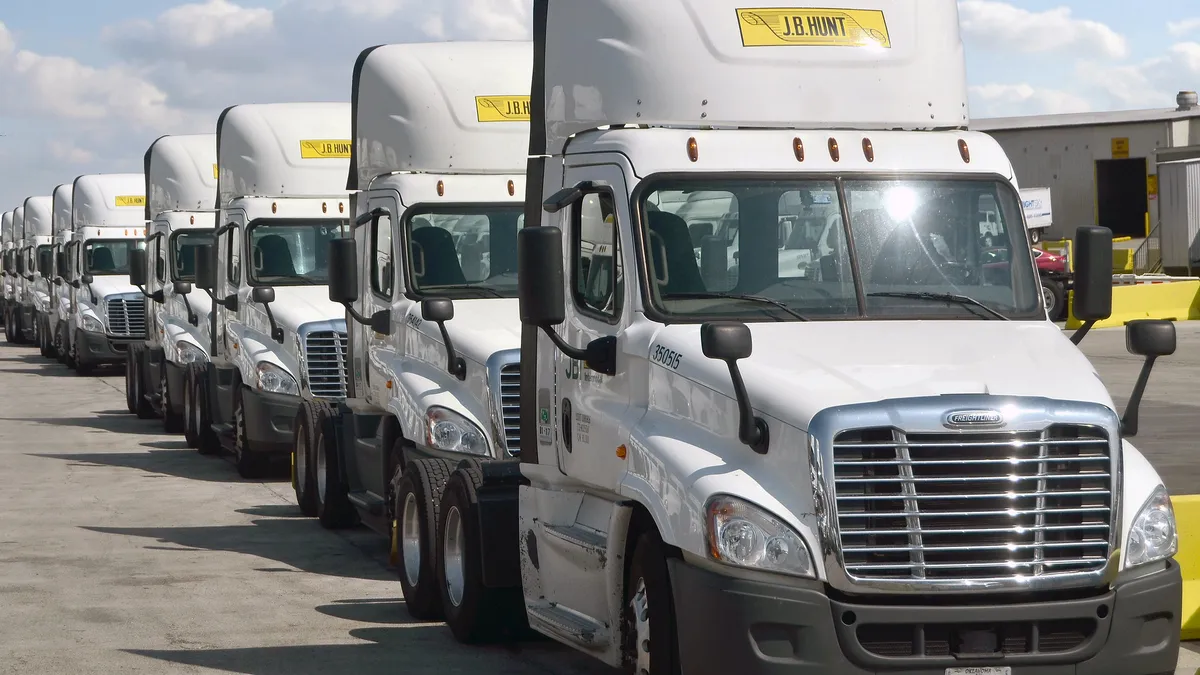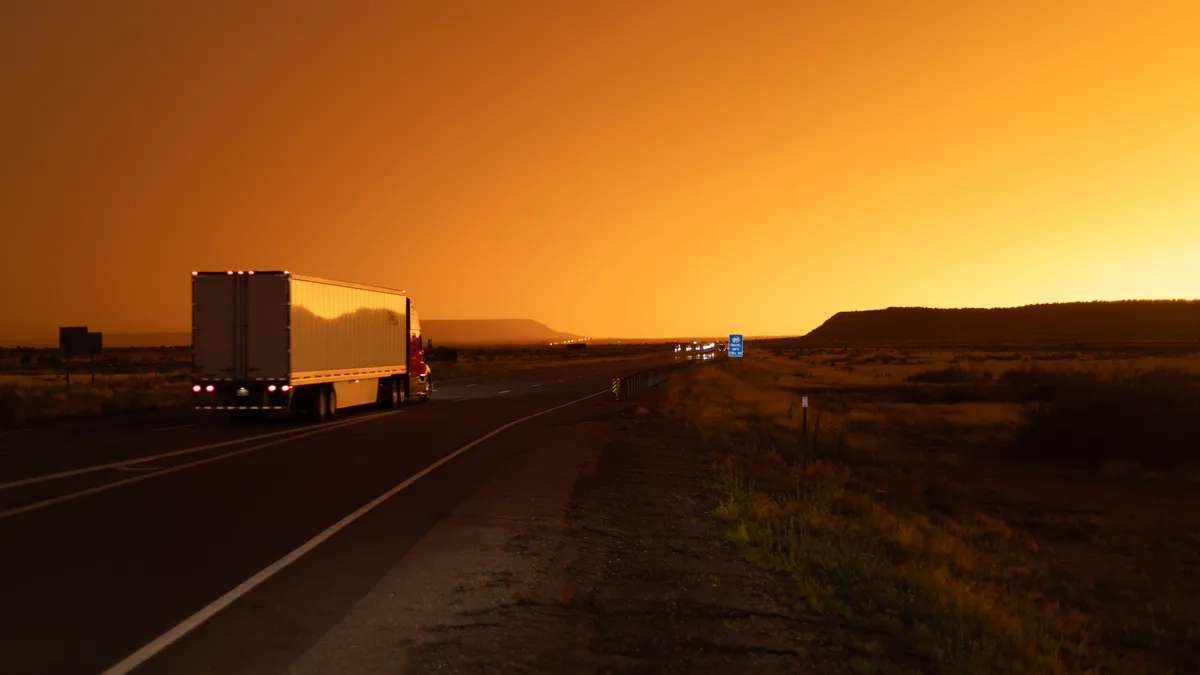Dive Brief:
- J.B. Hunt Transport aims to reduce carbon dioxide equivalent, or "CO2-e," per million ton-miles by 3% by 2025, the carrier said Friday. The company's sustainability metrics fall in line with the Sustainability Accounting Standards Board, a nonprofit that develops and maintains sustainability reporting standards. CO2-e is defined as the number of metric tons of CO2 emissions with the same global warming potential as one metric ton of another greenhouse gas.
- In steps to achieve the goal, J.B. Hunt aims to convert its entire fleet to automatic manual transmissions by 2022, which the company said is about 1% more fuel efficient than traditional manual transmissions. The carrier also plans to modernize its fleet with tractors certified under the Environmental Protection Agency's Phase 2 GHG emissions and fuel-efficiency standards for medium- and heavy-duty engines and vehicles.
- The company set a longer-term goal by 2035 to convert at least 25% of its day cab and straight truck fleet to run on alternative fuel. The carrier said it didn't know when alternative power will become widely available and economically viable, but it thinks there will eventually be a business case for it, "particularly in some of our operations that utilize day cabs in a local and/or regional network," the report states. The company is researching electric, hydrogen, natural gas and other systems.
Dive Insight:
J.B. Hunt now has a plan to reduce emissions — a novelty in the industry, according to CEO John Roberts, who said in a statement the carrier is "one of the first companies to provide such a report in our industry group."
J.B. Hunt will start an idle-reduction program this year using its proprietary app. "Using gamification as a reduction catalyst," the carrier will let drivers see how their engine idling compares to others in their peer group, incentivizing competition.
The carrier will also use software for route optimization to cut down on empty miles and deadheading, reducing "needless fuel burn," the report said.
J.B. Hunt recognized challenges to reducing scope 1 emissions, with "the availability of commercially and economically viable" alternative fuel systems. The report also named converting over-the-road shipments to rail through its intermodal business as an obstacle.
Achieving its goals depends on:
- Multiple suppliers of alternative-power equipment with robust service networks.
- An infrastructure for refueling and/or recharging trucks.
- Total cost of ownership — including sticker price, maintenance cost, cost to power and residual equipment values — of a truck that runs on alternative power is at least equal to diesel.
- New reliable equipment that allows the company to haul similar goods while abiding by weight and other restrictions, and has good enough range to maximize HOS.
Range is one of the main barriers to electrifying Class 8 fleets. Mike Roeth, North American Council for Freight Efficiency executive director, said most electric trucks operating now are used for short hauls, such as trips from ports to warehouses. Class 8 trucks tend to have a daily range of 200 miles maximum, Roeth said.
J.B. Hunt said it is committed to adopting the most advanced equipment from OEMs and assisting OEMs in developing commercially viable alternatives to diesel trucks. It's currently testing natural-gas-powered equipment "with select customers" and is investing in aerodynamics on tractors and trailers.
Though the carrier touted being one of the first to report under Sustainability Accounting Standards Board framework, sustainability has been an ongoing trend in the industry. In a Samsara survey of 300 fleet managers published in May, 90% said electric vehicles were the "inevitable future of commercial fleets."
Many fleets, including J.B. Hunt, have committed to EPA's SmartWay Transport Partnership, a voluntary program to measure, document, benchmark and improve efficiency.
Schneider prides itself on being the first TL/intermodal carrier in the program. Knight Transportation, which says it has "one of the cleanest burning tractor fleets in the country," became a member of that program when it began in 2004. Old Dominion became a member of the program in 2009 and has received an excellence award from the EPA for the last five years, consecutively.











